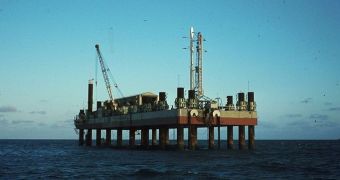Scientists speaking on Tuesday, at the annual meeting of the American Geophysical Union (AGU), have demonstrated that, while the last rocket tests North Korea did were failures, the country is making important progress in building increasingly bigger and better delivery systems. While Pyongyang continues to argue that the rockets are used for orbital missions only, there is no proof of this, and analysts believe that the country is developing a new generation of atomic weapons, Wired reports.
Earlier this year, in April, North Korea launched a Taepodong-2 missile, which authorities in the Communist nation claim placed a satellite in orbit. According to data from international tracking stations, this does not appear to have been the case. The mission was not a failure either, which leaves as the only possible explanation the fact that Pyongyang conducted another long-range rocket test, meant to improve its defensive and offensive capabilities. As one of its neighbors, Japan is extremely worried about these developments.
The country lies close to North Korea, and falls within the limits of short-, medium-, and long-range missiles. The April test also saw the NK rocket flying over Japan, causing outrage in the country, and prompting calls from Japan to the United Nations to intervene. But the flight's trajectory also meant that the rocket punched a hole through the ionosphere, the outermost layer of the atmosphere, right above the neighboring country's territory.
Investigator Kosuke Heki, who is a geodesy specialist at the Hokkaido University, used more than 1,000 GPS receivers to calculate the trajectory of the deliver system, based on the interactions that occurred between the rocket's exhausts and the oxygen ions in the upper atmosphere. The expert found that the new rocket had up to eight times more water molecules in its exhaust plumes, a fact that “perhaps reflects improvement in the thrust of the Taepodong series,” Heki wrote in his study's abstract.
“Their [North Korea's] determination is still very helpful for analysts outside of the US government in determining the trajectory and therefore the missile’s capabilities and characteristics, but it is not any better than the US can do with its infrared satellites that observe the exhaust of the rocket during its entire powered trajectory. So their method is very exciting for us [non-governmental-organization] people, but not so important for governments in determining the missile’s capabilities,” Geoff Forden says.
The scientist is an expert on missile tracking and weapon systems at the Massachusetts Institute of Technology (MIT), in the United States. He argues that the Japanese tracking method is indeed new and “very interesting,” but again states that satellite-based observations are still the norm in rocket launch tracking. The two experts agree on the fact that the horizontal path the rocket took is more consistent with a weapon's test than with an attempt to reach orbit.

 14 DAY TRIAL //
14 DAY TRIAL //